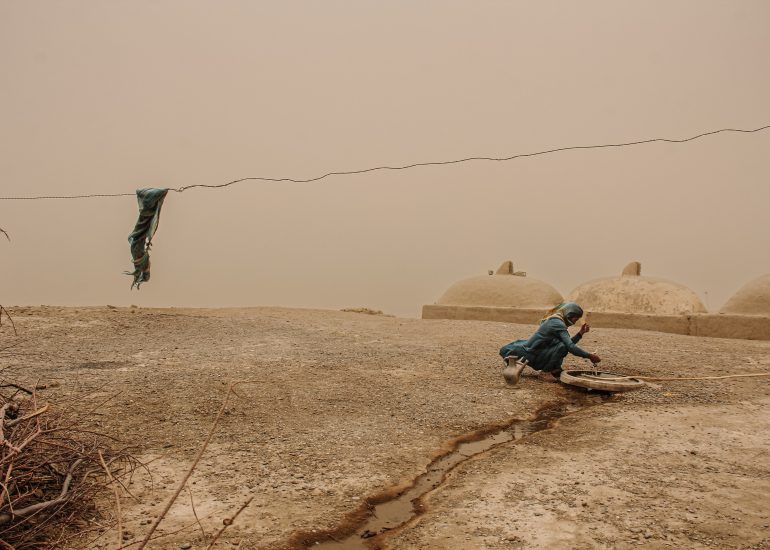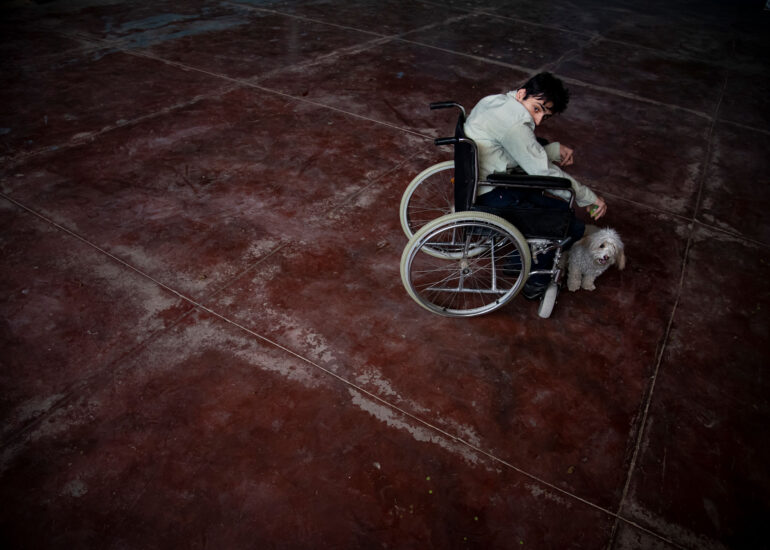Dancing in the Dust
Sistan and Baluchestan, covering an area of approximately 180,726 square kilometers (equivalent to 11.5% of Iran’s total area) and with a population of over 2.8 million, is the second-largest and expansive province in the southern part of the country. This province has been severely affected by drought for over two decades, compounded by the drying of Hamun Lake (the third-largest lake in Iran and the seventh-largest international wetland). The reduction in rainfall and the intensified 120-day Sistan storms, extending for more than 200 days, have significantly altered the region’s climate pattern. More than three thousand villages in the area, with a population of 347,000, lack any water supply system, and drinking water is provided to the residents through tankers, often with delays.
The extent of Hamun Lake during the wet season is 5,660 square kilometers, of which 3,820 square kilometers belong to Iran. The Helmand River, the sole lifeline of Sistan, originates from the Baba Mountains in Afghanistan and, after traveling about 1,050 kilometers, enters Hamun Lake. The main branch of the Helmand, called the Common River, forms part of the Iran-Afghanistan border, then enters Afghanistan and another branch, in Iranian territory. Iran’s water rights from the Helmand, as stipulated in the 1972 Kabul agreement, allocate 26 cubic meters per second (equivalent to 850 million cubic meters per year) to Sistan and Hamun Lake. Over the past 30 years, disputes over Helmand water have escalated, and during the past seven years of drought, no water, except a small amount from Afghanistan’s uncontrolled floods, has entered Hamun Lake. The construction of the Kajaki Dam, Kamal Khan Dam, and the installation of various pumping stations on the Helmand from Afghanistan have prevented water from entering Sistan. In recent years, especially after the return of the Taliban in 2021, the Iranian government has sought to address its water rights, leading to severe diplomatic tensions between the two countries.
Regardless of Afghanistan’s role, the negligent governments in the Islamic Republic of Iran have failed to compensate for the affected farmers and the people of Sistan, who, until 1990, held the entire wheat reserve of Iran. Economic recession, migration, and turning to false and dangerous occupations such as fuel and drug smuggling to the borders of Afghanistan and Pakistan have placed this border province in a crisis more critical than ever before.
Recently in Portfolio

Made by ♥ and ☕ | Designed by: Zirzamin Studio




